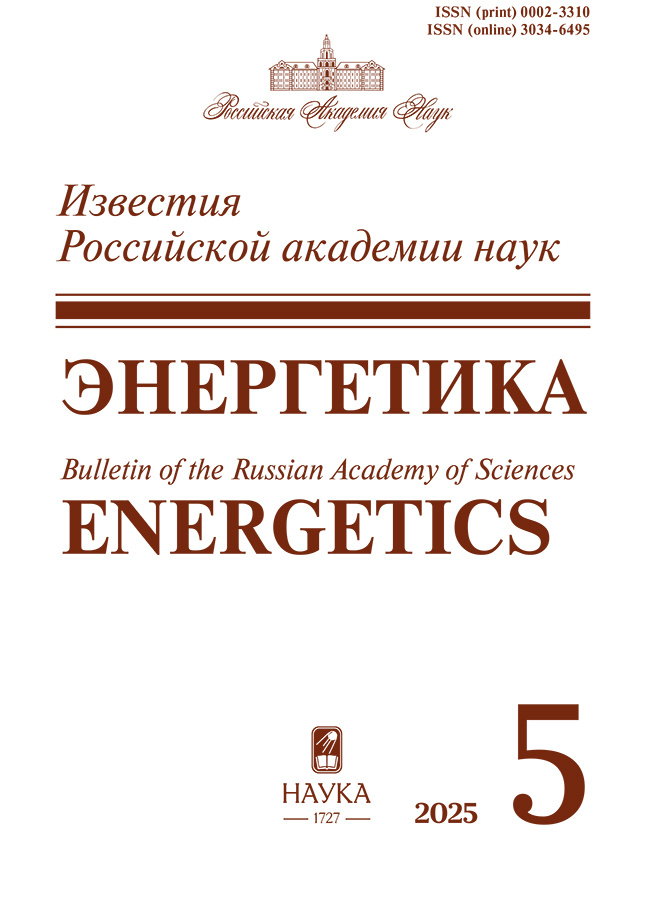Известия Российской академии наук. Энергетика
В журнале публикуются статьи по широкому кругу фундаментальных научных проблем, связанных с развитием энергетики как технической основы цивилизации. В первую очередь это статьи по проблемам развития одной из крупнейших энергетик мира – энергетики России, ее топливно – энергетического комплекса и энергетического машиностроения. Публикуются статьи по проблемам глобальной, общей, атомной, космической энергетики, экономики и экологии энергетики, энергетической политики, электроэнергетики и электротехники, теплоэнергетики и теплотехники, гидроэнергетики и гидротехники, теплофизики и электрофизики, а также статьи по иным проблемам, связанным с энергетикой.
Большую долю в тематике журнала занимают проблемы регулирования и управления энергетическими установками, энергосистемами и их объединениями, их математического и физического моделирования для исследования и разработки систем управления стационарными и переходными процессами, проблемы надежного и безопасного функционирования энергетических установок и систем.
Журнал является рецензируемым, включен в Перечень ВАК, входит в систему РИНЦ.
Журнал основан в 1963 году.
Свидетельство о регистрации СМИ: ПИ № ФС 77 - 67158 от 16.09.2016
Текущий выпуск
№ 5 (2025)
Статьи
ИССЛЕДОВАНИЕ ВАРИАНТОВ ГАЗОСНАБЖЕНИЯ ЮЖНЫХ РЕГИОНОВ ИРКУТСКОЙ ОБЛАСТИ
Аннотация
В работе представлены варианты газоснабжения Иркутской области. В одном варианте предлагается использовать газ Ковыктинского месторождения, в другом — северных нефтегазоконденсатных месторождений. Для решения поставленных задач использовался метод комплексной оптимизации непрерывно и дискретно изменяющихся параметров теплоэнергетических систем, разработанный в ИСЭМ СО РАН. Оптимизация проводилась по критерию минимума средней цены газа на выходе из газопровода. Исследования показали, что газ с предложенных месторождений имеет конкурентную цену, которая позволит успешно развиваться экономике региона.
 3-18
3-18


Методические вопросы и перспективные направления использования низкопотенциальных источников тепла
Аннотация
Рассмотрены методические вопросы, связанные с оценкой потенциала и дальнейшим использованием низкопотенциальных источников тепла (далее – НПТ). Дано определение данных источников. На основе термодинамического подхода определены температурные границы НПТ для различных видов теплоносителей. Особенностью подхода является связь верхней границы НПТ и среднего температурного уровня потребителей тепла для получения электрической энергии и тепловой энергии. Выделены пять основных групп технологий утилизации низкопотенциального тепла. К ним относятся рециркуляция потоков теплоносителя, рекуперация и регенерация тепла, применение трансформаторов тепла, генерация электрической энергии перед передачей тепла потребителю, а также получение холода на основе низкопотенциального тепла в абсорбционных холодильных установках. Рассмотрены наиболее перспективные направления использования НПТ, приведены соответствующие им потребители. Отмечено, что они охватывают практически все отрасли экономики России: энергетику, промышленность, ЖКХ, сельское хозяйство. Показано, что имеющиеся в настоящее время технические решения ориентированы на весь диапазон температур источников НПТ и способны удовлетворить потребности широкого круга потребителей тепла.
 19-46
19-46


Солнечный коллектор-воздухонагреватель с тепловым аккумулятором
Аннотация
Применение тепловых аккумуляторов, заряжаемых солнечной энергией, позволяет значительно улучшить работу солнечных воздухонагревательных установок, что обусловлено способностью таких систем эффективно функционировать без топливного дублера даже при полном отсутствии прямого солнечного излучения. Основным недостатком существующих конструкций солнечных воздухонагревателей с тепловыми аккумуляторами является неполное использование поверхности контейнера с теплоаккумулирующим материалом в циклах зарядки и разрядки. Предложено новое конструктивное решение для солнечного коллектора-воздухонагревателя, которое обеспечивает использование всей внешней поверхности трубчатых контейнеров с теплоаккумулирующим материалом в процессе теплообмена при функционировании установки. Проведенными лабораторными и натурными испытаниями экспериментального образца такой установки получены данные по теплоте плавления теплоаккумулирующего состава и производительности по нагретому воздуху в разные периоды года. Реализация такой установки в климатических условиях Махачкалы позволяетпроизводить нагретый воздух объемом до 734 м3/сут с каждого квадратного метра абсорбера и до 21 м3/сут — с 1 кг теплоаккумулирующего состава.
 47-60
47-60


Обзор современных тенденций и проблем применения цифровых двойников и искусственного интеллекта в энергосистемах нефтегазового комплекса
Аннотация
В работе приведен обзор современного состояния и направления развития технологий цифровых двойников (ЦД) и искусственного интеллекта (ИИ) с акцентом на их применение в энергосистемах объектов нефтегазовой промышленности. Рассмотрены архитектурные основы ЦД, включая шестиуровневую модель и классификацию по уровням и областям применения. Освещены основные методы ИИ, применяемые в сочетании с ЦД: машинное обучение для прогнозирования нагрузки и возобновляемой генерации, обучение с подкреплением для оптимизации управления в условиях неопределенности, генеративный ИИ для поддержки принятия решений и моделирования сценариев. Подробно рассмотрены прикладные решения: реализация предиктивного обслуживания оборудования, оптимизация использования попутного нефтяного газа, создание интеллектуальных систем энергетического менеджмента. Обозначены актуальные проблемы и вопросы: выбор инфраструктуры обработки данных, кибербезопасность и экономико-правовое регулирование. Перечислены перспективы внедрения ЦД с учетом международных и российских экологических требований, в частности, цели по утилизации не менее 95% попутного нефтяного газа к 2027 г. Представленные примеры отечественных и зарубежных разработок и исследований показывают, что технологии ЦД и ИИ обладают высоким потенциалом в решении задач мониторинга оборудования, прогнозирования нагрузки, оптимизации производственных процессов и автоматизированного управления энергосистемами в нефтегазовом секторе.
 61-85
61-85


Памяти академика РАН Волкова Эдуарда Петровича
 86-87
86-87












